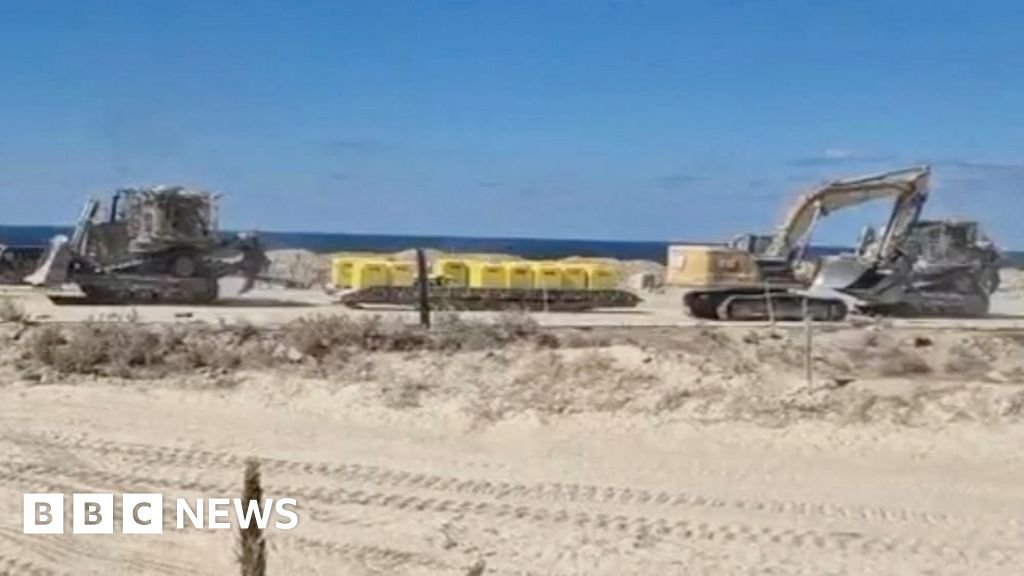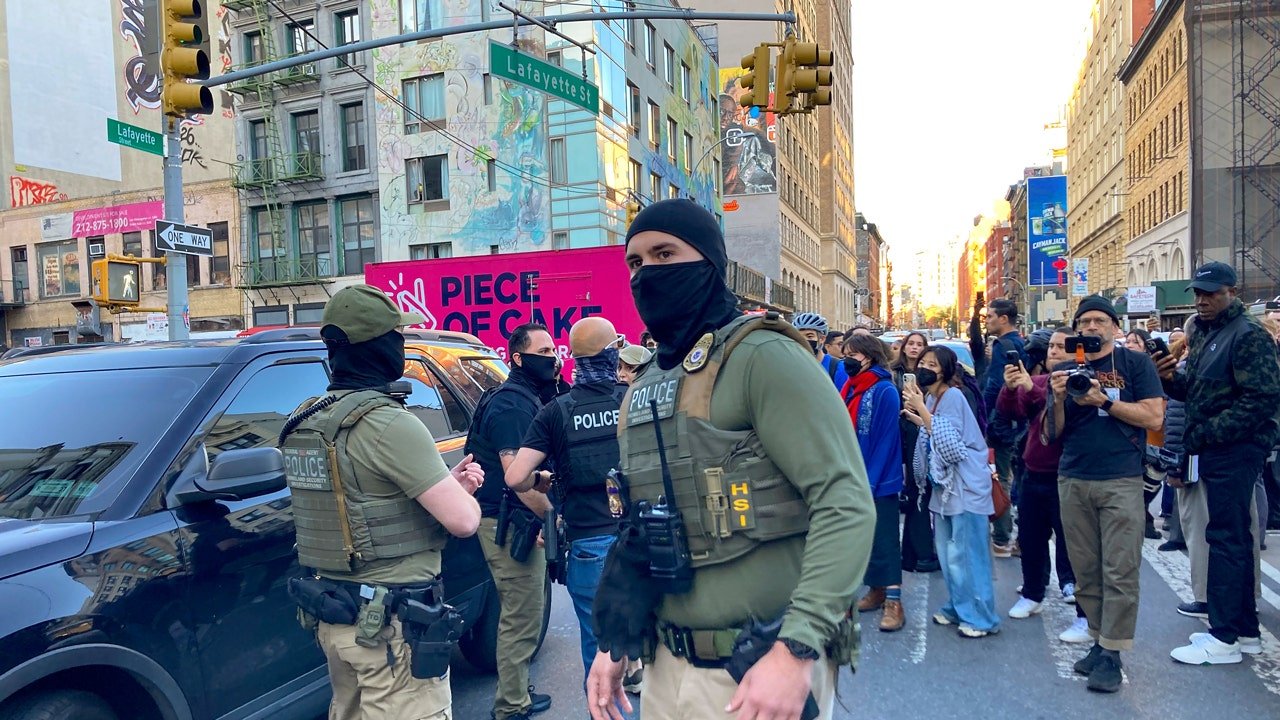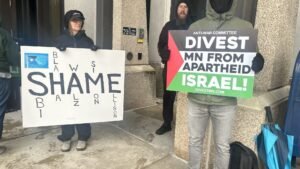
Israel’s ‘yellow line’ in Gaza gives Netanyahu room to maneuver
Under Donald Trump’s peace plan for Gaza, the “yellow line” — which Israel withdrew earlier this month — is the first of three phases of Israeli military withdrawal. It controls 53% of the Gaza Strip.
An Israeli newspaper, Yedioth Ahronoth, referred to it as “effectively the new border” in Gaza.
It’s a comment that pleased Prime Minister Benjamin Netanyahu’s far-right coalition partners.
The fences and demarcations Israel is now building along the border are meant to clearly divide the region, but they could also serve to dampen the divergent hopes and expectations of Washington and Mr. Netanyahu’s allies at home.
How long he can keep both expectations largely depends on this next phase of negotiations.
The border marked by the yellow line is temporary, but the further withdrawal of Israeli forces depends on resolving difficult issues pinned on the second phase of Donald Trump’s deal – including the process of power transfer in Gaza and the disarmament of Hamas.
Washington is keen to ensure that nothing goes awry in this next delicate phase of negotiations. US Vice President JD Vance flew in on Tuesday to press Netanyahu for peace talks. Trump’s press secretary Steve Witkoff and Jared Kushner met with the Israeli prime minister on Monday.
Israeli newspapers have reported that Netanyahu is getting a stern message from his American allies to “exercise restraint” and not jeopardize the ceasefire.
When Israel complained that Hamas violated the terms of a cease-fire on Sunday and killed two soldiers, the response advocated by Mr Netanyahu’s far-right national security minister was a demand for one word: “war”.
Instead, Israel launched intense, but brief, airstrikes before restoring the cease-fire, and was careful to emphasize that its forces had been attacked inside the Yellow Line—anxious to demonstrate to Washington that Israel had not violated the rules.
Netanyahu has said the war will not end until the destruction of Hamas – its disarmament, and the complete demilitarization of Gaza, are among the conditions he has laid out.
But Israeli commentators insist that the real decisions about Israel’s military action in Gaza are now being made in Washington.
The yellow line – and the tough task ahead of negotiators in this second phase of the deal – are clues as to why Netanyahu’s coalition partners chose to wait rather than threaten to topple his government.
Many extremist settlers – and ministers – dream that the next phase of the process will be impossible to resolve, and that the yellow line will indeed become the de facto border, opening the way for new settlements on Gazan land. Some hardliners want Israel to annex the entire Gaza Strip.
The majority of Israelis want the war to end and the remaining bodies of the hostages and Israel’s serving soldiers to come home.
But Israel’s prime minister is known as a politician who likes to keep his options open for as long as possible, and the deal is a phased, cautious one.
This first phase of agreement would mean withdrawing from positions that Israel controls over half of Gaza and agreeing to a cease-fire to allow hostages to return home.
From here, it will be difficult to align the goals of its US and domestic allies.
Benjamin Netanyahu has repeatedly underlined that a violation of the agreement by Hamas – including a failure to disarm – would allow Israel to return to war.
“If this is achieved in an easy way, so much the better,” he told the Israeli public earlier this month. “If not, it will be achieved the hard way.”
Donald Trump has said the same. But Washington has so far been tolerant of delays and violations in implementing the deal on the ground, giving Netanyahu less political space than he might want.













Post Comment